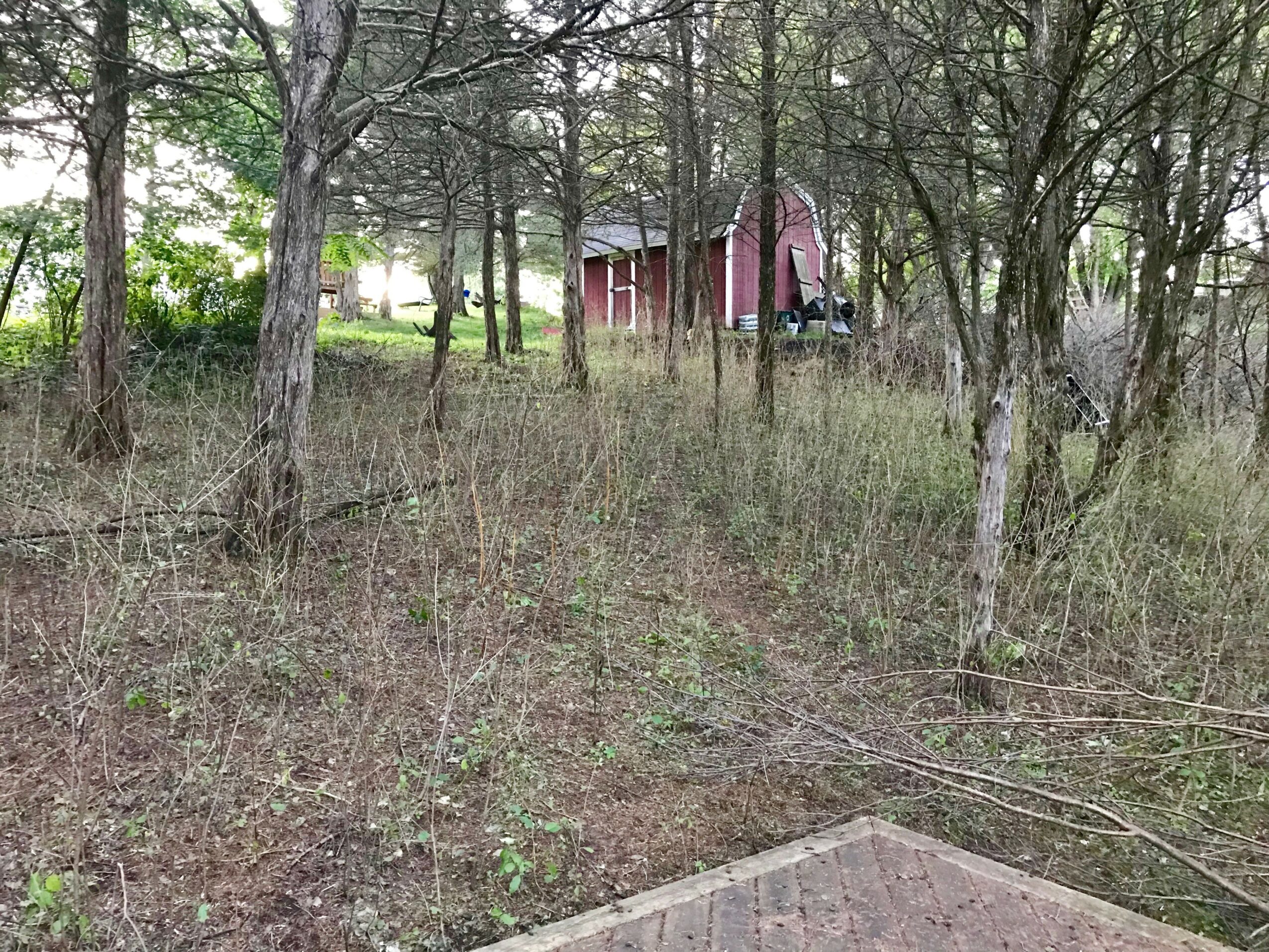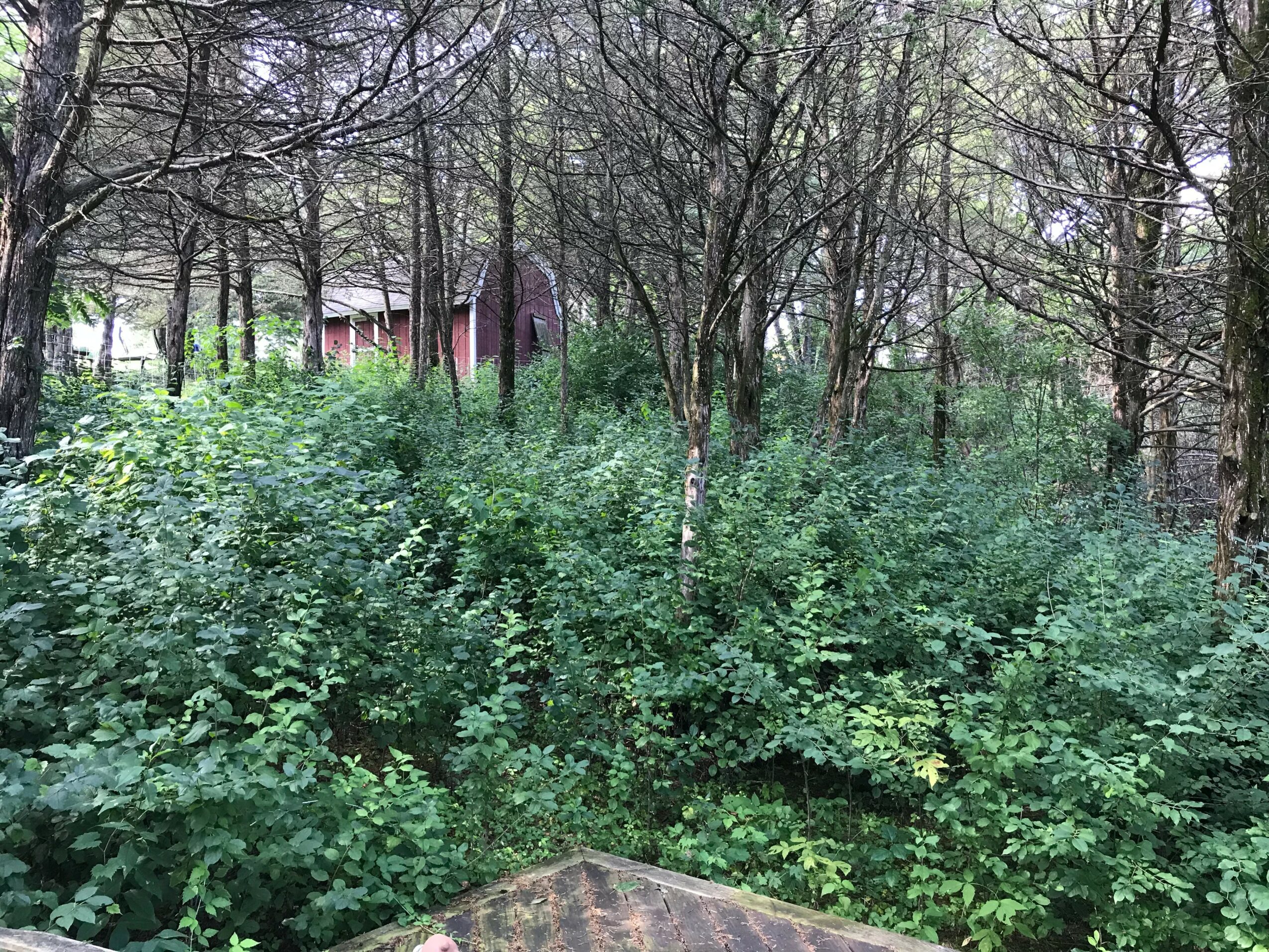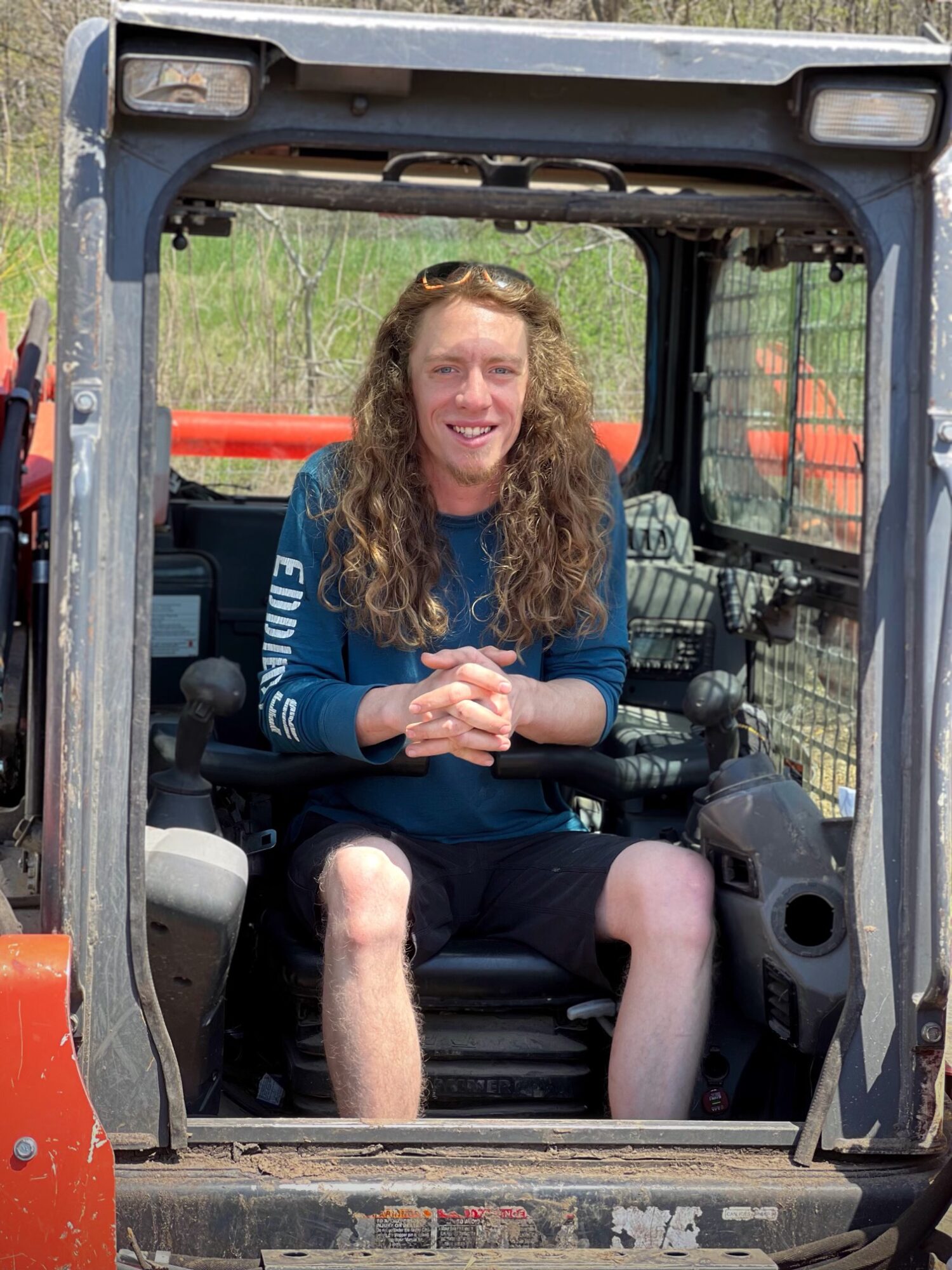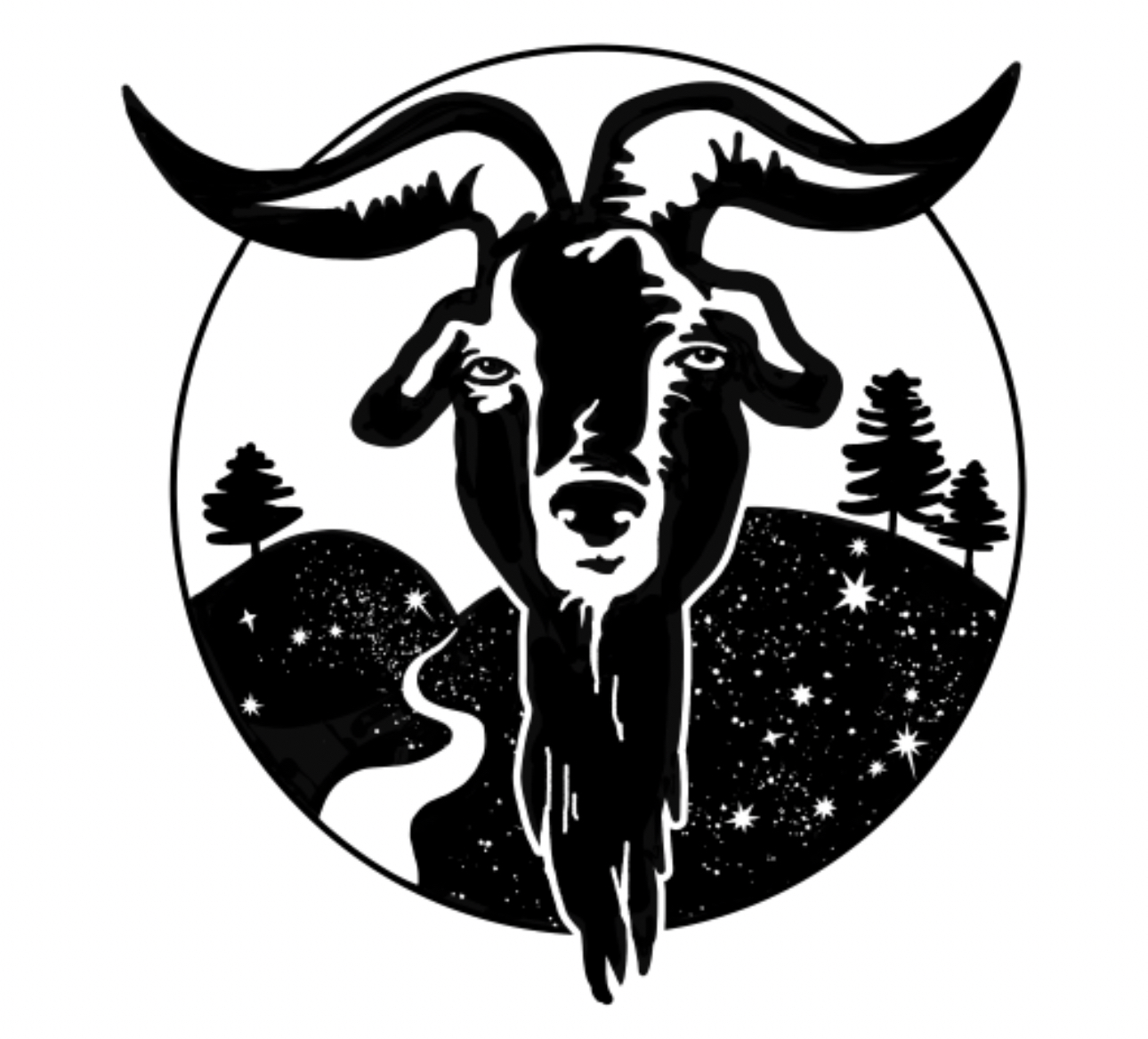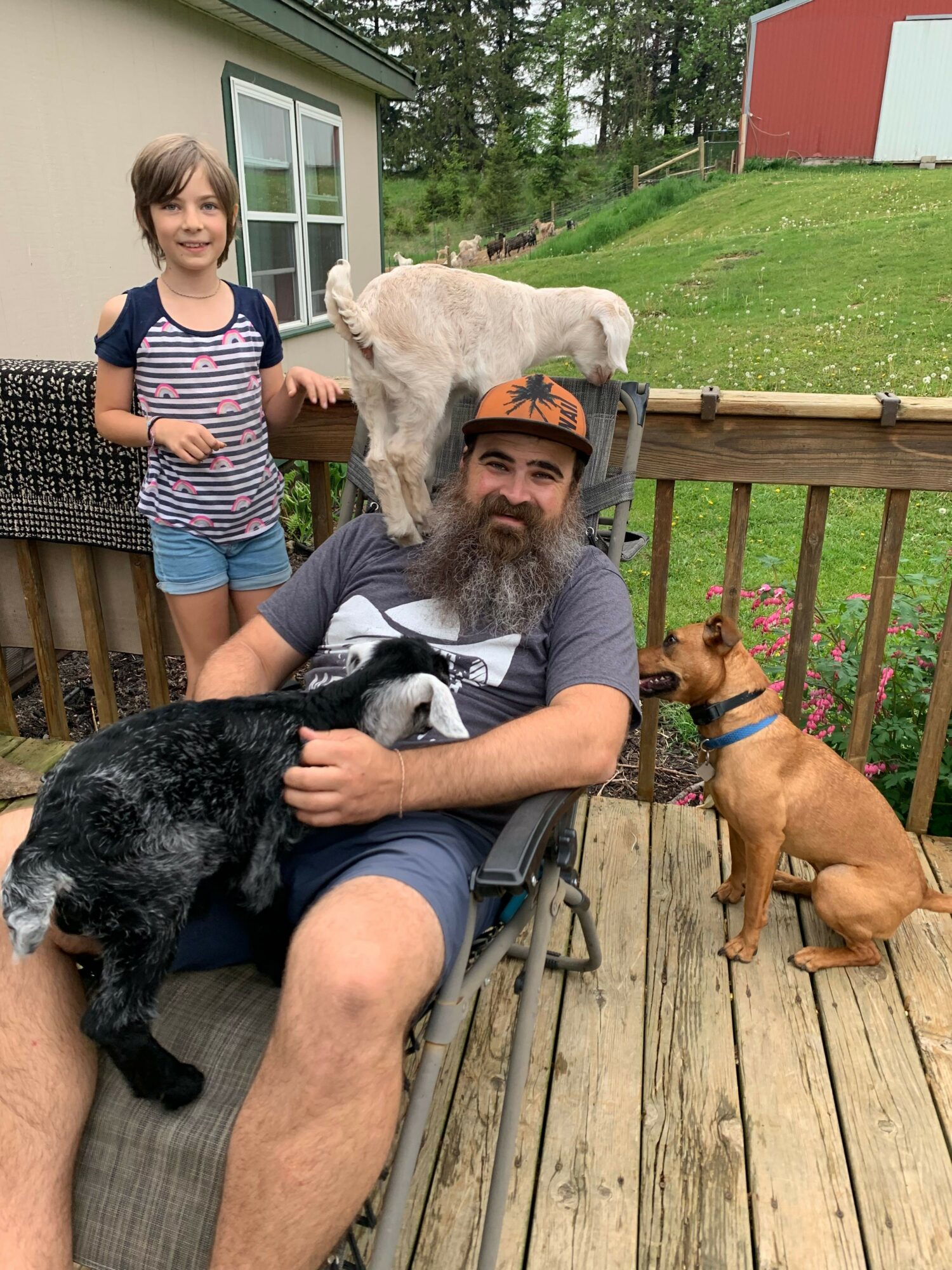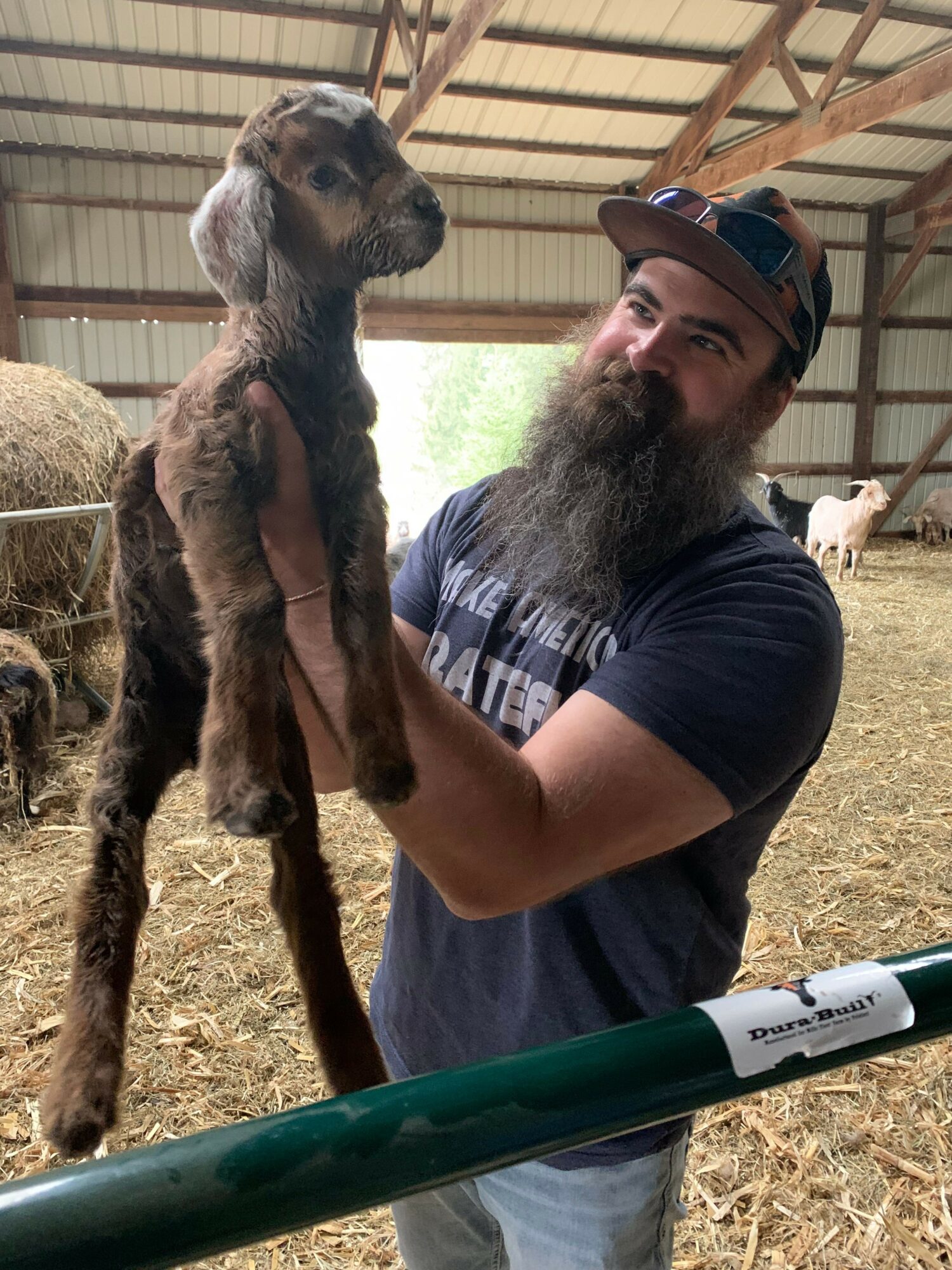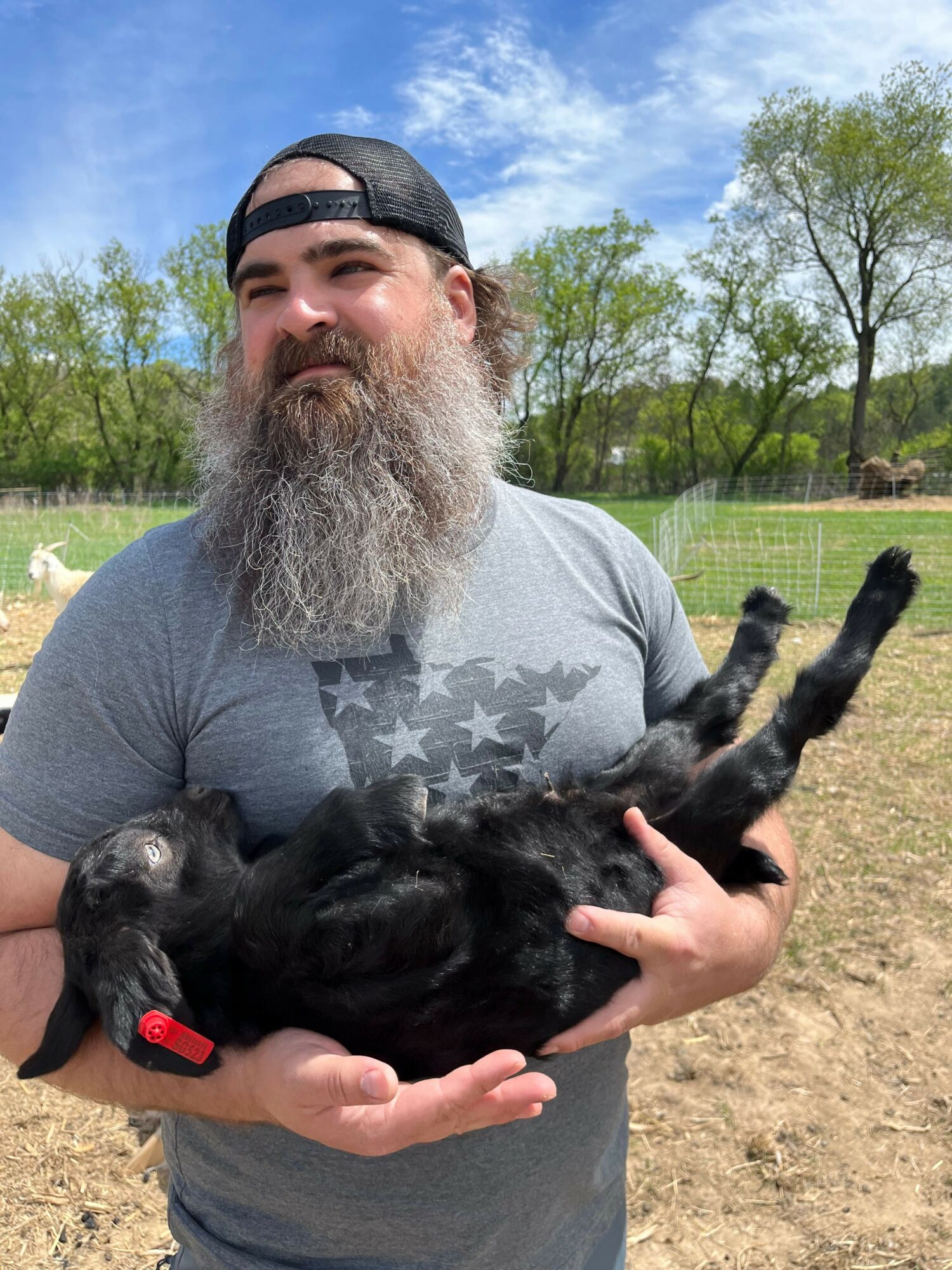

Today we’d like to introduce you to Dana Myers.
Hi Dana, we’d love for you to start by introducing yourself.
Our journey started pretty humbly—with four goats and a big buckthorn problem.
Back in 2016, my girlfriend and I had a property overrun with invasive buckthorn. We didn’t want to rely on chemicals or heavy machinery, so we started experimenting with goat grazing. The results were impressive. Word spread quickly in our neighborhood, and soon neighbors were asking if they could rent our goats. Four goats obviously weren’t enough, so we started growing the herd.
Through managing our own land and helping others, we learned a lot—what worked, what didn’t, and how to fine-tune grazing to actually make a long-term impact on invasives. In 2017, I officially launched ScapeGoats. Since then, it’s been full steam ahead.
Today, we manage a herd of about 700 goats across Wisconsin and Minnesota. Our work goes beyond just grazing. We’ve developed a comprehensive approach to ecosystem restoration: using targeted goat grazing to weaken invasives, removing large unwanted species, and planting native seed to rebuild healthy, resilient landscapes.
We now run a full-scale ranch, raising New Zealand Kiko and Australian Cashmere goats. Every spring, we welcome 200–300 babies. We sell goats to other breeders, harvest cashmere, and continue to expand what ScapeGoats can offer—both as a land management service and as a working ranch. We also make goat content for Instagram, TikTok, and YouTube streaming all activities from live births, goats on the farm, grazing jobs, large removal, seeding, and more!
It started with a few goats and a patch of buckthorn. Now it’s a mission to help restore landscapes to what they should be.
Alright, so let’s dig a little deeper into the story – has it been an easy path overall and if not, what were the challenges you’ve had to overcome?
It definitely hasn’t been a smooth road—but it’s been a rewarding one.
I didn’t grow up on a farm or ranch, so I was starting from scratch in many ways. Everything—goat care, plant ID, invasive species management, fencing, grazing rotation—had to be learned from the ground up. Early on, I was working a full-time 9–5 job (still am), then putting in full-time hours afterward managing the goats, building infrastructure, hauling water, fixing fences, and learning as I went.
Scaling from four goats to over 700 in just nine years came with a steep learning curve. I became an “armchair vet” by necessity—managing everything from birthing complications to foot rot to nutrition. There were long nights and more than a few moments of wondering what I’d gotten myself into. But every challenge was part of the process, and I’ve learned something valuable from each one.
Running a grazing business also means working in unpredictable environments—dealing with land access, weather, herd movement logistics, and communicating with a wide range of landowners. It’s a balance of science, grit, and intuition.
The road hasn’t been easy, but the growth—both personally and professionally—has made it all worth it.
Alright, so let’s switch gears a bit and talk business. What should we know about your work?
By day, I work full-time in project management and civil engineering. By night (and weekends, and pretty much all other hours!), I run ScapeGoats—managing a team of 10 employees during the grazing season and a smaller crew during the off-season.
ScapeGoats is a vegetation management and ecological restoration company that uses targeted goat grazing as a powerful, chemical-free tool to control invasive species. But we don’t stop at grazing—we specialize in large-scale invasive removal and native seeding to restore landscapes to what they’re meant to be. We take great pride in the transformation we help bring to people’s properties—from buckthorn-choked forests to thriving, balanced ecosystems.
What really sets us apart is how dialed-in our process has become. This isn’t just about sending goats out to eat whatever’s green. Our approach is rooted in years of learning and adapting—understanding goat behavior, plant life cycles, soil health, and the timing it takes to make restoration successful. We’ve built a system that works, and our results speak for themselves.
We’ve grown entirely by word of mouth. We’ve never done traditional advertising, and we’re proud of the relationships we’ve built with our clients—many of whom come back year after year. They don’t just love the work we do—they love the goats, the joy they bring, and the visible change they see on their land.
What I’m most proud of, though, is the team that’s helped build this with me. I couldn’t have done this without them. They’ve stuck with the company, helped shape it, and are just as passionate about the mission as I am. Watching them grow alongside the business has been incredibly rewarding.
And personally, owning ScapeGoats has taught me more than I could have imagined—about the land, about history, about plants and animals, and about what it really takes to restore balance to ecosystems. It’s been a wild ride, and I wouldn’t trade it for anything.
Any big plans?
Looking ahead, we’re focused on continuing to expand ScapeGoats in both size and impact. We plan to grow our operations significantly—scaling up our herd to 2,000–3,000 goats just off our own ranch over the coming years. That growth will allow us to take on larger restoration projects and increase our ability to respond to the growing demand for sustainable land management solutions.
We’re also exploring the development of sister companies in other regions and the potential for franchising. We’ve spent years refining our techniques—dialing in a system that’s both effective and replicable. The idea of sharing that model and empowering others to run successful goat-based restoration businesses is something we’re seriously excited about.
Ultimately, the goal is to keep doing what we do best: restoring land the right way, supporting ecosystems, and building strong relationships with clients and communities. There’s a lot of work to be done, and we’re just getting started.
Pricing:
- All jobs are different. Cost is determined by location, infestation, acreage, customer goals to name a few
Contact Info:
- Website: www.scapegoatsfarms.com
- Instagram: @scapegoatsfarms
- Facebook: @scapegoatsfarms
- Youtube: @scapegoatsfarms
- TikTok: @scapegoatsfarms
